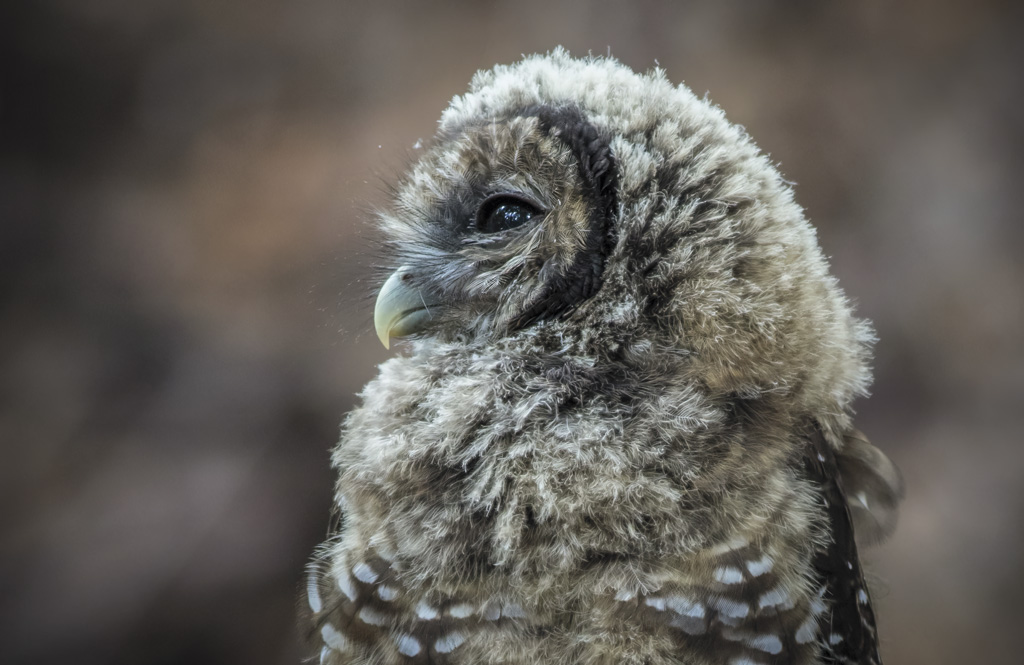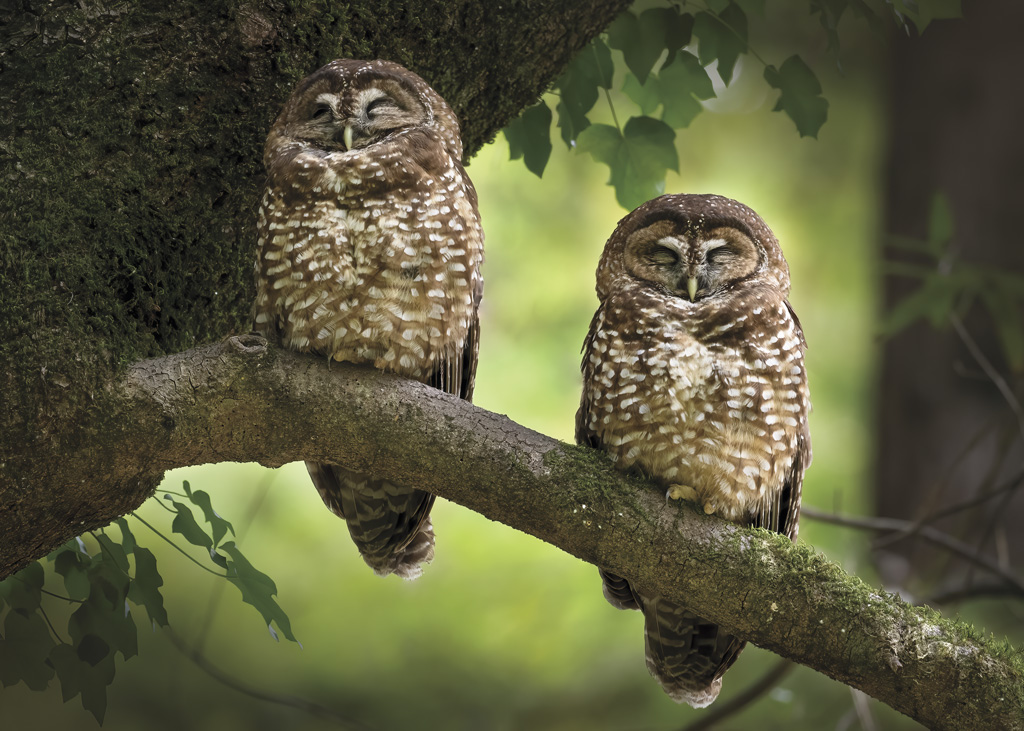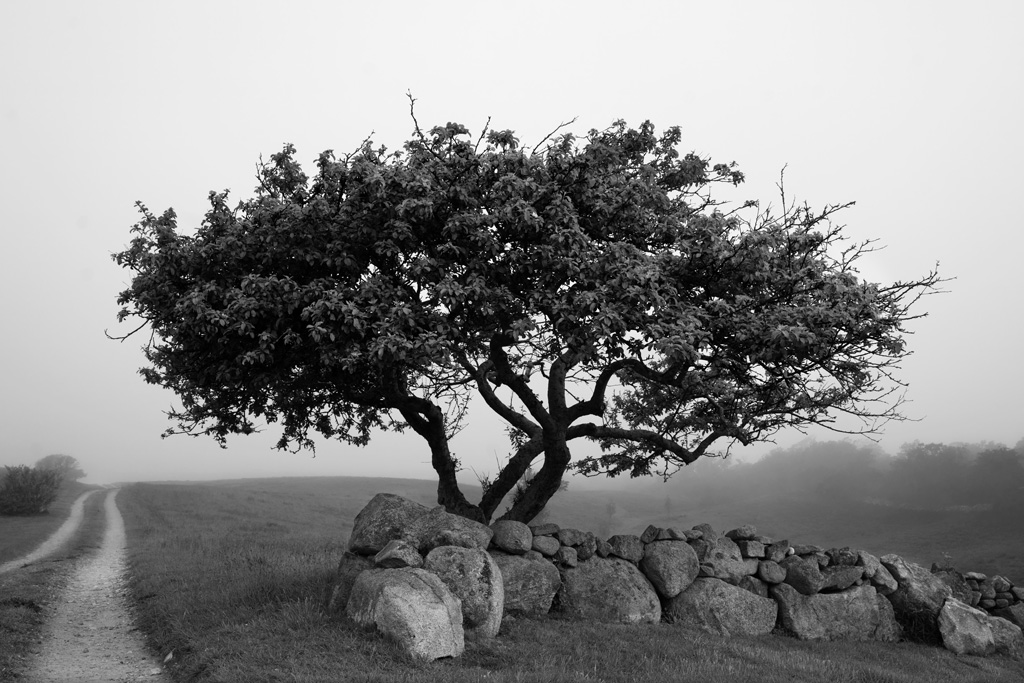With dusk falling earlier each day, local forests are enlivened by calls of the northern spotted owl, strix occidentalis caurina. “They will suddenly leave the roost once it’s dark enough and fly down to a hunting perch,” says Renée Cormier, senior avian ecologist at Petaluma’s Point Blue Conservation Science, who leads a northern spotted owl monitoring program in Marin County. “It’s not the sleepy owl we see during the day.”
The northern spotted owl is notable as a threatened subspecies under the Endangered Species Act and Marin is the southern extent of its range. For environmental scientist Julia Kelly and her family, a cherished encounter with spotted owls first came when she heard the owls’ calls a couple of years ago. This past spring, she finally witnessed one by happenstance, reinvigorating an awareness of and appreciation for the local environment where the creatures live. In Marin, locals don’t need to go far to encounter the owl, best observed at dawn or dusk. “We live with spotted owls and this has totally changed my perspective on the nature we have surrounding us. They need such a unique and distinct habitat,” Kelly says.
The northern spotted owl is a rare subspecies to see in the wild given substantial declines in numbers over its range, which extends all the way up to southwestern British Columbia. The owl typically occupies coniferous forest, so habitat loss due to logging has largely underpinned the species’ struggle. Yet with Marin’s protected lands and the longtime absence of the environmentally destructive practice, the owls are finding a healthy home in coniferous and even evergreen hardwood forest.
“Marin is kind of a bright spot,” Cormier says. “The population does appear to be stable through our long-term monitoring programs. We think there is a lot of wonderful protected habitat here as well as low numbers of barred owls.” Barred owls, once restricted to Eastern North America, have expanded their range to the West Coast and now directly compete with the northern spotted owl, creating an additional pressure.
In Marin, locals don’t need to go far to encounter the owl. “In a lot of other parts of their range they are in remote areas that aren’t near homes. We call these here urban northern spotted owls in regard to their proximity to homes in Marin,” says Cormier. Since the owls are yearlong residents, maintaining the same territory and mating for life, seeing the spotted owl is a possible, but always special, occurrence.
“If people are so lucky to encounter a spotted owl, enjoy it, but keep your distance and keep the visit short,” Cormier says. Because northern spotted owls will not necessarily react and fly away, it’s important to be proactive in giving them space, particularly during their February through July nesting season. As they are a threatened subspecies, their location should be kept secret. Avoiding rodenticide use at home as well as flash photography, loud noises and interactions with dogs (which should be kept leashed) while hiking will reduce disturbances and help protect the owls.
While the broader context of biodiversity and habitat loss are a weighty reality, for residents like Kelly, being able to live among the northern spotted owl is a motivation to respect and protect local landscapes. “While it’s well known that birds are declining and many birds are vulnerable, it feels so good to know there is a living threatened species in our backyard,” she says. “It gives hope.”











